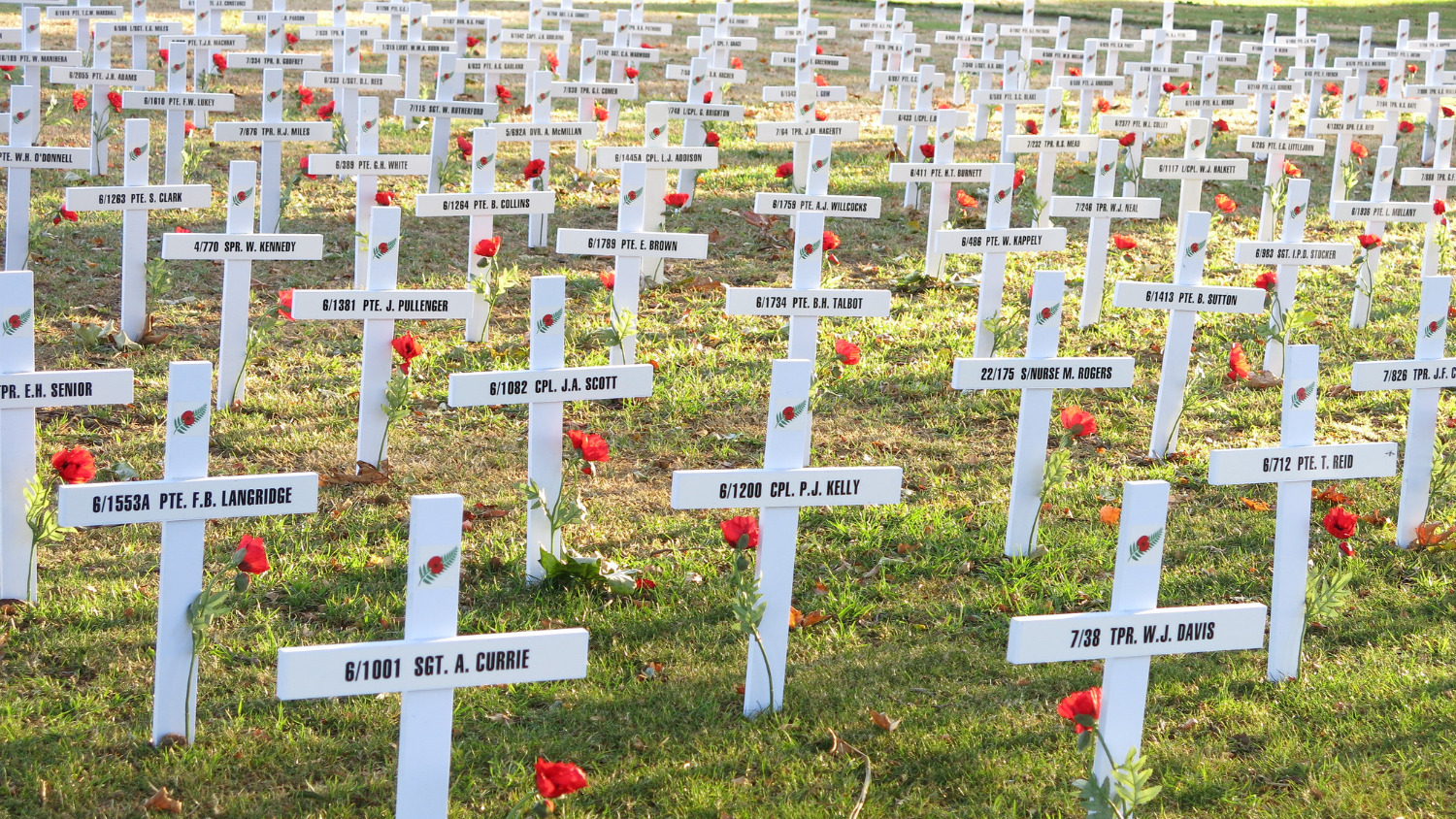Author Melinda Szymanik considers war books for children, how they create deeper empathy, and tells us what writers balance as they write these books.
Every year, amongst the latest batch of published stories for children about superheroes, horses, dogs and cats, adventure, wizards, dragons, dinosaurs and dystopias, there are always books about war. The last three years have seen an increase in the number of such books as we commemorate the centenary of World War One, and this will likely continue until the centenary ends in 2018.
If longer fiction relies heavily on conflict to provide a plot, it is hardly surprising that war features so often. But there are also many picture books and non-fiction titles on the subject. War books continue to proliferate. They frequently make awards shortlists and become award-winners. What Lies Beneath, a nationwide touring exhibition of recent New Zealand war-themed books for children was popular at libraries here and is now touring in Australia, where our books are sharing the stage with Australian titles.

If longer fiction relies heavily on conflict to provide a plot, it is hardly surprising that war features so often.
Yet war might seem a strange topic to choose to write about for children. Wars are full of trauma, suffering, death and destruction. They are about cruelty, despair, separation, and loss. They are often seen as an adult concern. They take away normalcy. They stretch hope and courage to their limits, and sometimes break them. But these are some of the very reasons why war is such an important topic for young readers to be exposed to.
When I started thinking about why books about war persist, I thought about my own introduction to the subject of war when I was a child. Back then, World War Two was still relatively recent history. And it was personally relevant to me: the war had had a major impact on my parent’s lives, with both born in Poland prior to 1939 (my father’s experiences would eventually form the basis of my book A Winter’s Day in 1939). And it wasn’t just me. It seemed important for the next generation to understand the breadth and the depth of what had happened – and we didn’t have to look too hard for the information to help us do that. ‘The World at War’, a 26-part British documentary television series chronicling the events of World War Two was appointment viewing for my father, and I eagerly watched with him. Aged 10 or 11 at the time, I was gripped by every terrible detail. I watched television series like ‘Hogan’s Heroes’ and ‘Colditz’, and movies like ‘The Great Escape’.
I also read, by choice, many WW2 novels including The Silver Sword, When Hitler Stole Pink Rabbit, The Singing Tree, I am David, and Summer of My German Soldier. I read Anne Frank’s Diary. I read Commando comics. They all captured some aspect of what it was like to be caught up in the machinery of conflict in the modern age, and how people survived and endured and escaped despite impossible circumstances. And, sometimes, how they didn’t.
Do we still need to talk about war?
Thankfully, New Zealand’s involvement in wars has reduced significantly since the end of WWII. While around 100,000 New Zealanders served in the First World War and 140,000 in the Second, we have contributed much more modestly to subsequent conflicts. New Zealanders serving in the Vietnam War (1963–1975) numbered closer to 3,000, and combatant numbers have dropped further since then. Our isolation provides a certain degree of protection, as do our diplomatic relationships with other nations. Is the subject of war even relevant to us anymore? Do our children still need to read about it?
While humanity still seems inherently predisposed to fight … it is essential we show the true impact of war, and build empathy and tolerance in our communities from an early age.
The short answer is yes – I believe they do. Sadly the potential for large-scale conflict is always present. While humanity still seems inherently predisposed to fight over resources, ideologies, religious beliefs and more, it is essential we show the true impact of war, and build empathy and tolerance in our communities from an early age. Why are wars so terrible? What happened in the past? How can we avoid making the same mistakes in the future? Can we find better ways to share resources and resolve differences? Books on war show that the consequences of not doing so are terrible. And that these consequences can last for generations. Although the World Wars were fought decades ago, books keep this information available to new generations of readers.
The Best and Worst of Human Nature – Welcoming Refugees
While wars reveal the worst of human nature, sometimes they are also about the best of human nature. Tolerance and understanding can come from seeing that war is never black and white, and that good people stand on both sides of a conflict. David Hill’s junior novel Enemy Camp and picture book The Red Poppy, illustrated by Fifi Colston, are excellent examples of this. We are likely to have commonalities with our enemies than differences. We often have the same goals and aspirations, and have fought for the same reasons.
War stories provide deeper insight into experiences that children have no other access to. While news reports cover the details of attacks, bombings, and changing frontlines; books can delve much deeper into the impact of war on individuals. This level of understanding helps children to develop the empathy crucial to a healthy society. Because for every war, there are displaced persons: armed conflict is a significant cause of migration. Understanding the devastating circumstances that have brought immigrants to our shores can help us extend the hand of friendship and be patient when those newcomers struggle to adjust to life in New Zealand.
Many war-centric novels for children, as with my novel A Winter’s Day in 1939, are told from the perspective of civilians, the innocent bystanders, people who are too young to fight, people caught up through no fault of their own and whose lives are changed for ever. They show young readers that war doesn’t just affect grown-ups.
War books often spring from true stories. Narratives follow characters inspired by real people who exhibit feats of resourcefulness, endurance and resilience. And kindness. These can be empowering experiences for young readers who may be battling their own conflicts. We can find stories like this in books such as Gladys Goes to War by Glyn Harper, with illustrations by Jenny Cooper, and Evie’s War by Anna Mackenzie. They help us to see that we are capable of so much more than we think we are.
They help us to see that we are capable of so much more than we think we are.
Keeping Our Young Readers in Mind
While war stories are clearly important, that darkness at the centre of them can be a concern. Children’s authors and illustrators are acutely aware of the need to handle the challenging material that war stories provide in a sensitive manner, tempering the information to suit their young audience. Authors agonise over what should and shouldn’t be included. We don’t want to make war seem like a glorious adventure, but nor do we want to traumatise our readers. We mute the worst details of torture and human misery, and illustrators play down the extent and the bloodiness of injuries. We look away from the worst of human behaviour.
But it would be a mistake to completely exclude the real-life outcomes of fighting, of battles, of bombs, bullets, knives and bare hands. It would be a mistake to deny the suffering that war creates. Focusing on the characters’ emotional journeys, especially in longer works, enables the author to leave out some of the most unpleasant details while retaining the sense of the horror and futility of war. Of course, emotional responses can also make for difficult material. It’s a balancing act. If you don’t feel a little of what the characters are going through, then what is the point? And wars can have a very long reach. As Glyn Harper and Jenny Cooper’s book Jim’s Letters and The Bakehouse by Joy Cowley show, you do not even need to be on the frontline to suffer from the consequences of war.
Creating citizens with empathy and tolerance of difference is beneficial to society and every book about war might be seen as a step towards world peace.
I never regretted reading war books as a child. I wanted to understand. Why would people do such terrible things to each other? How could people survive such dreadful circumstances? I cried at the sadness and suffering. I drew strength from the resourcefulness and resilience of people. I learned what people are capable of, both good and bad. Books gave me the chance to share in their experiences and understand more about the world as a result.
War books are an opportunity to generate an understanding of what war does to countries, communities, families and individuals. Creating citizens with empathy and tolerance of difference is beneficial to society and every book about war might be seen as a step towards world peace. I have been asked why a particular person had to die in A Winter’s Day in 1939. The first answer is because their death actually happened. The second answer is that this is the question we must keep asking in order to prevent further unnecessary deaths in the future. Books can show that, while survival is possible, solutions to conflict can and must be found, that we can be better and do better.

Melinda Szymanik
Melinda Szymanik is an award-winning author of picture books, short stories and novels for children and young adults. She also writes poetry for adults and children, and regularly teaches creative writing. Recent titles include Lucy and the Dark (Puffin [Penguin RH], 2023) and Sun Shower (Scholastic, 2023).



